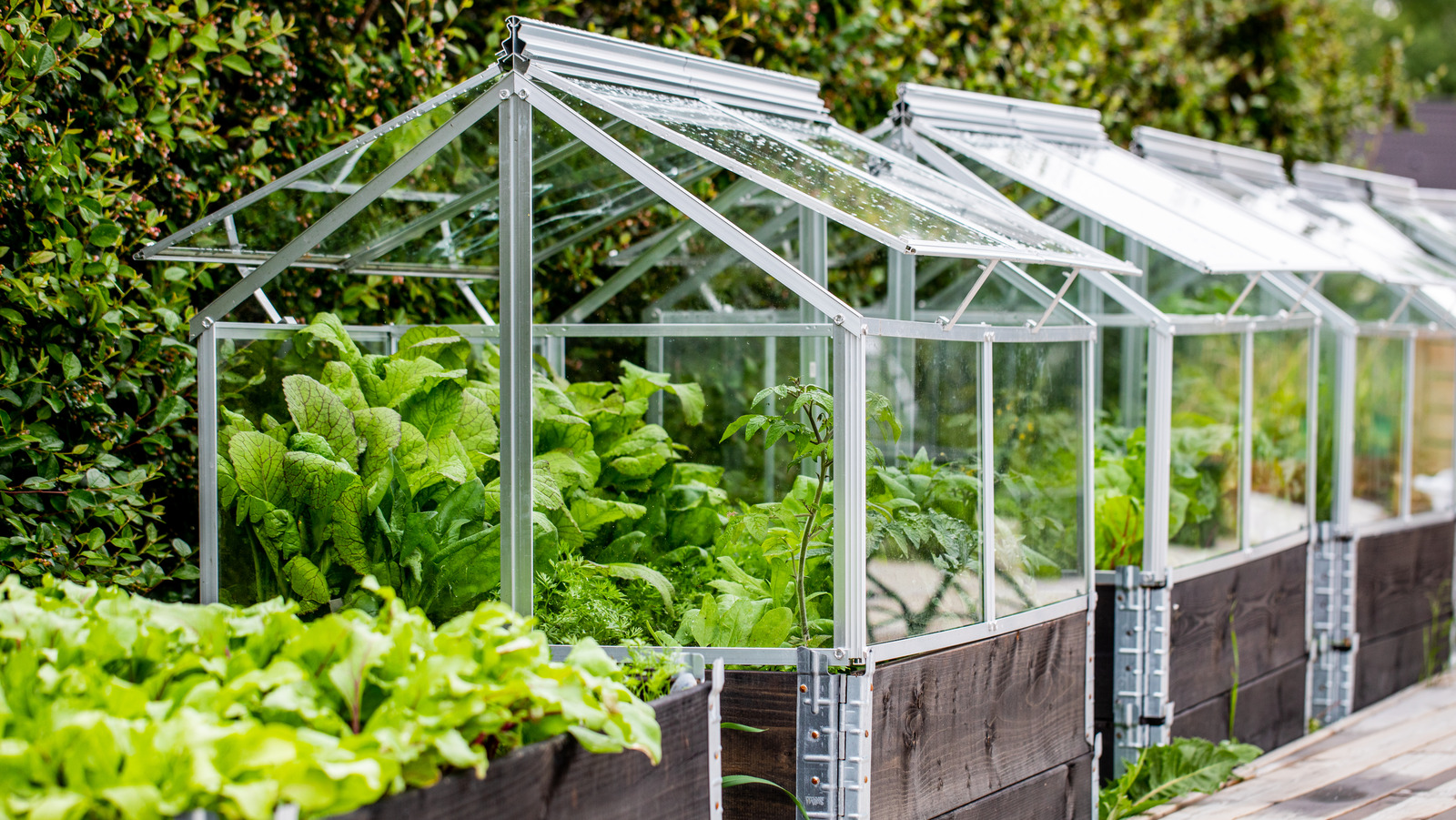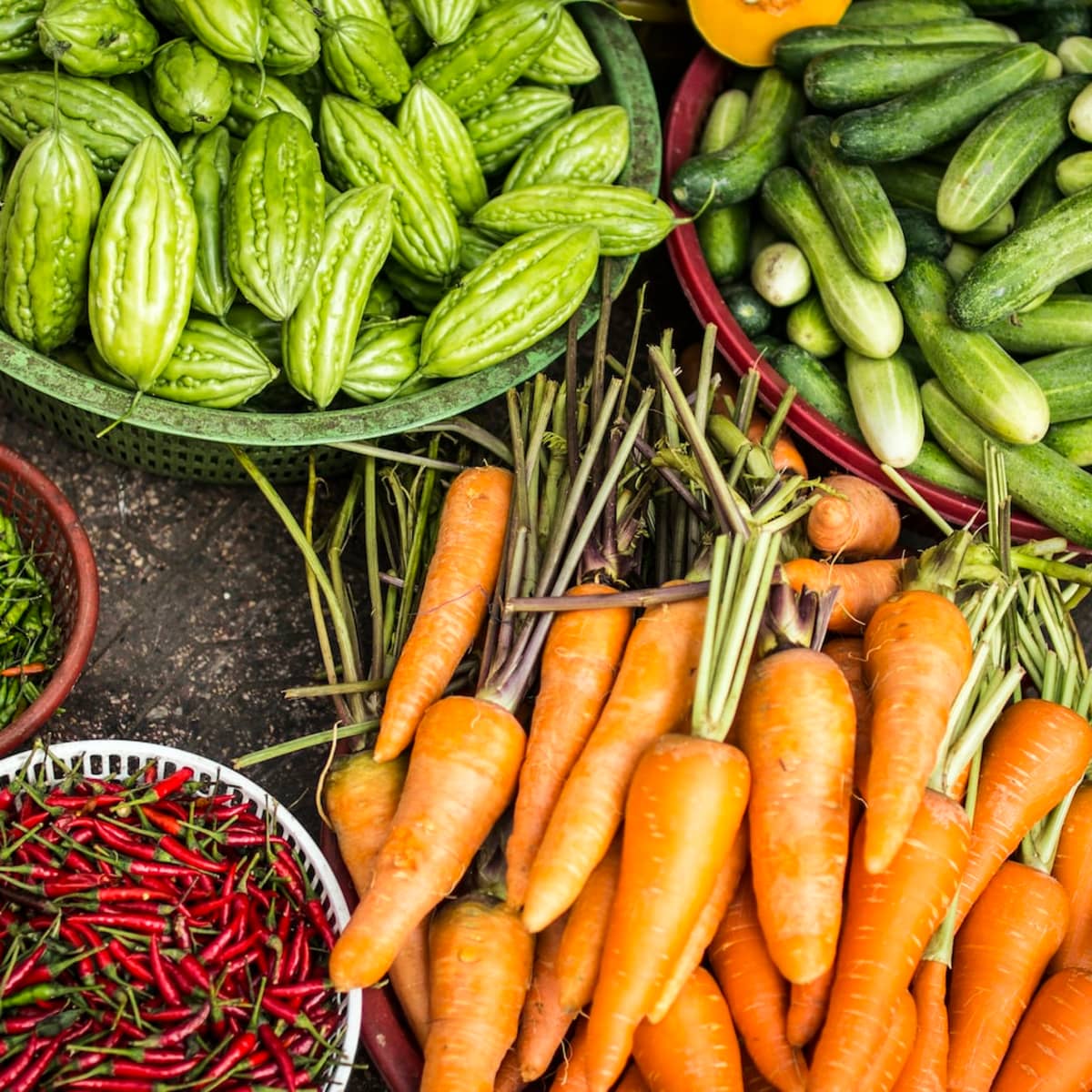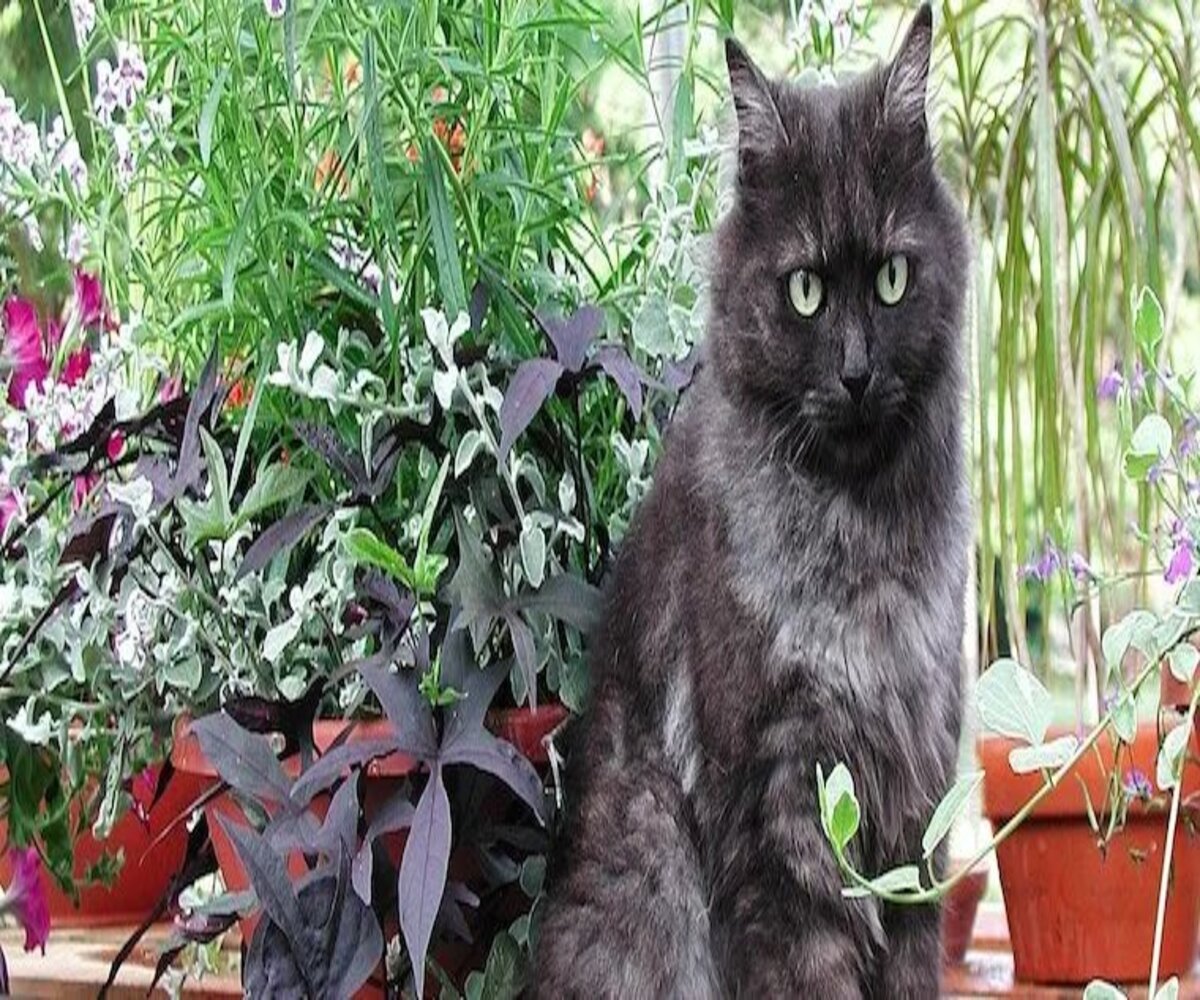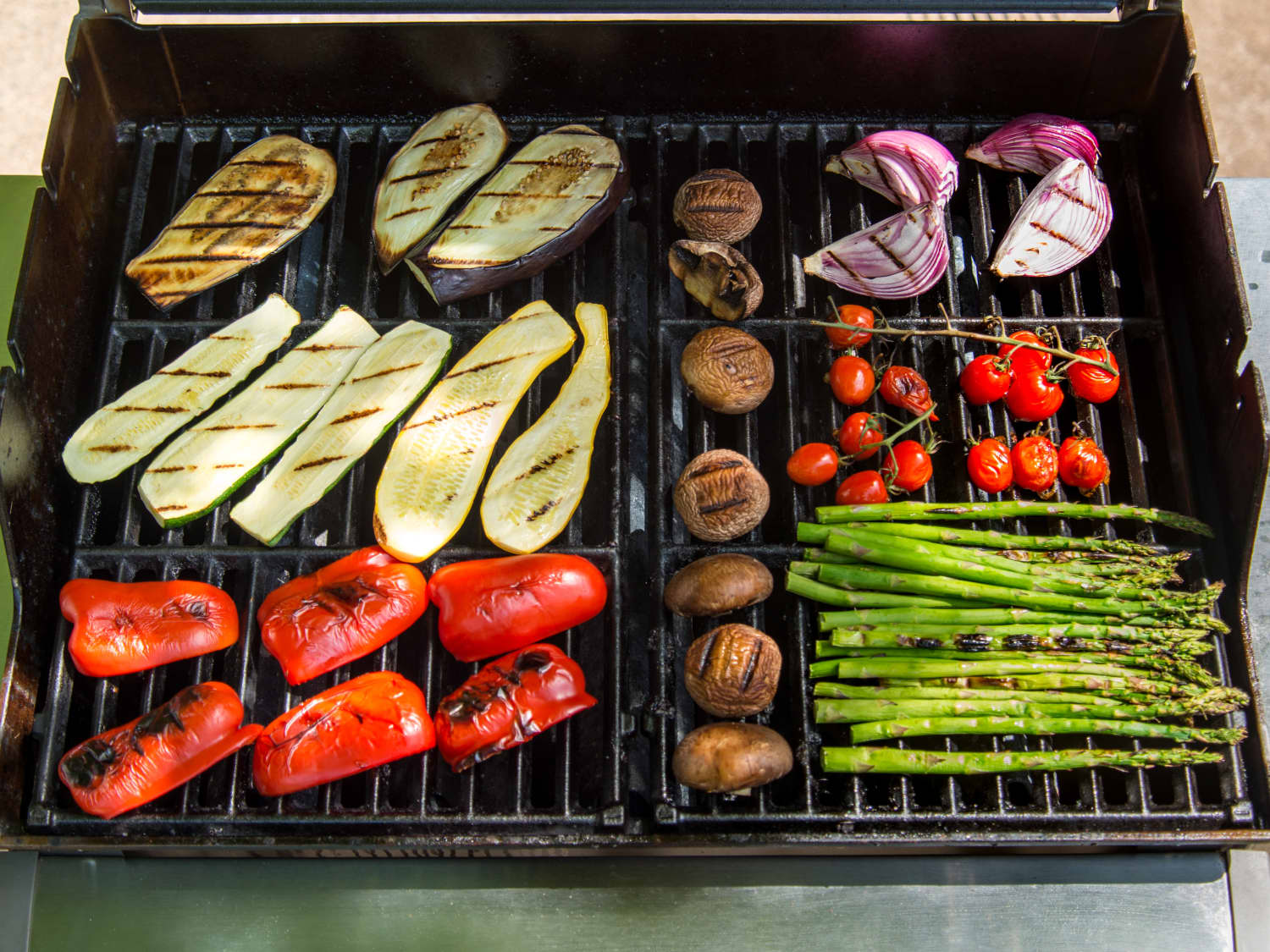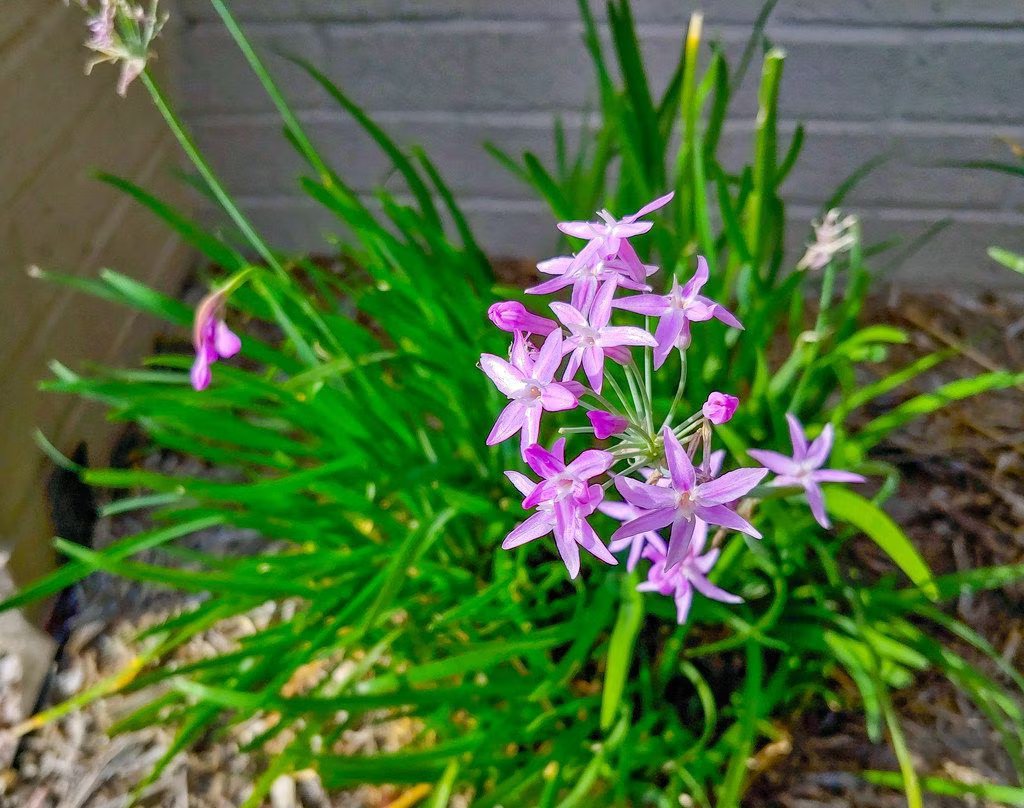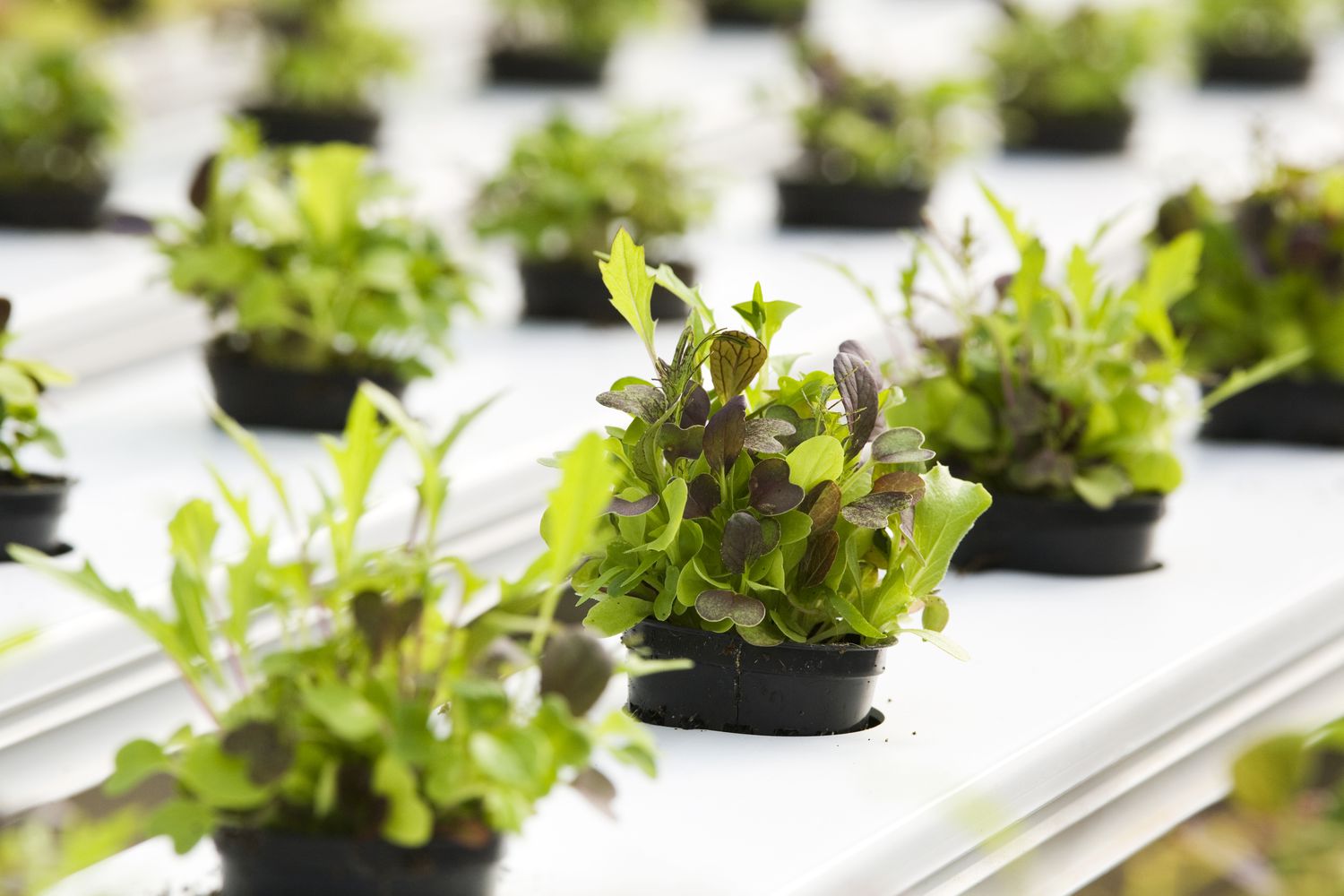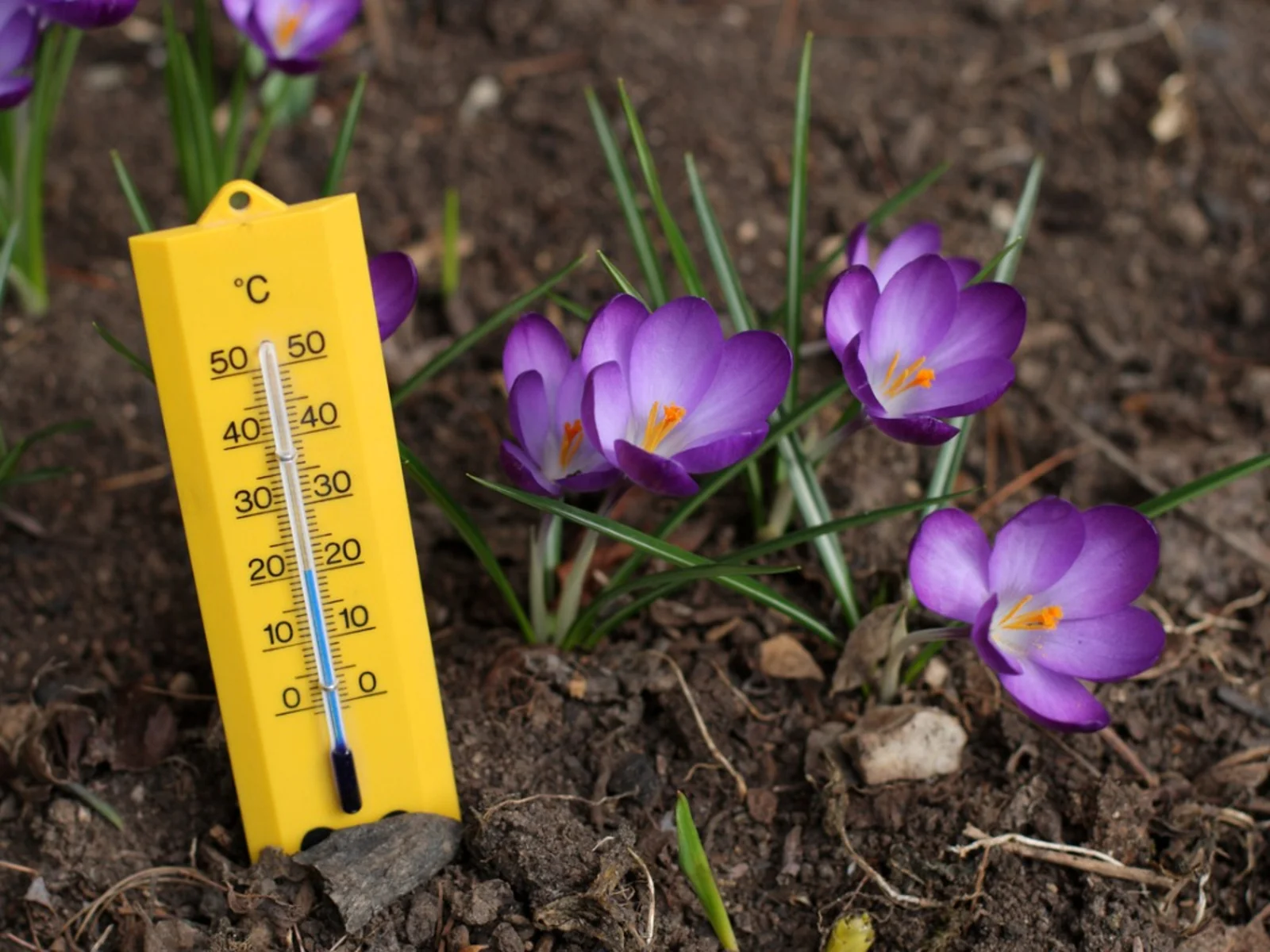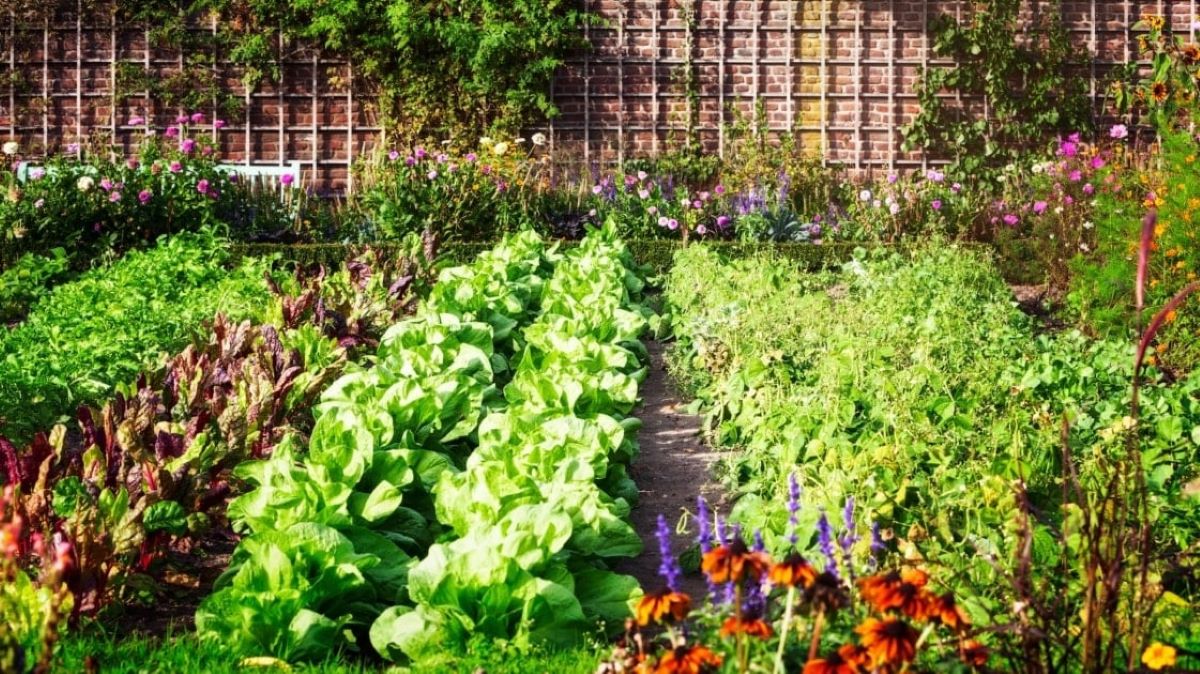Home>Types of Gardening>Edible Gardening>What Herbs Can You Grow In Water
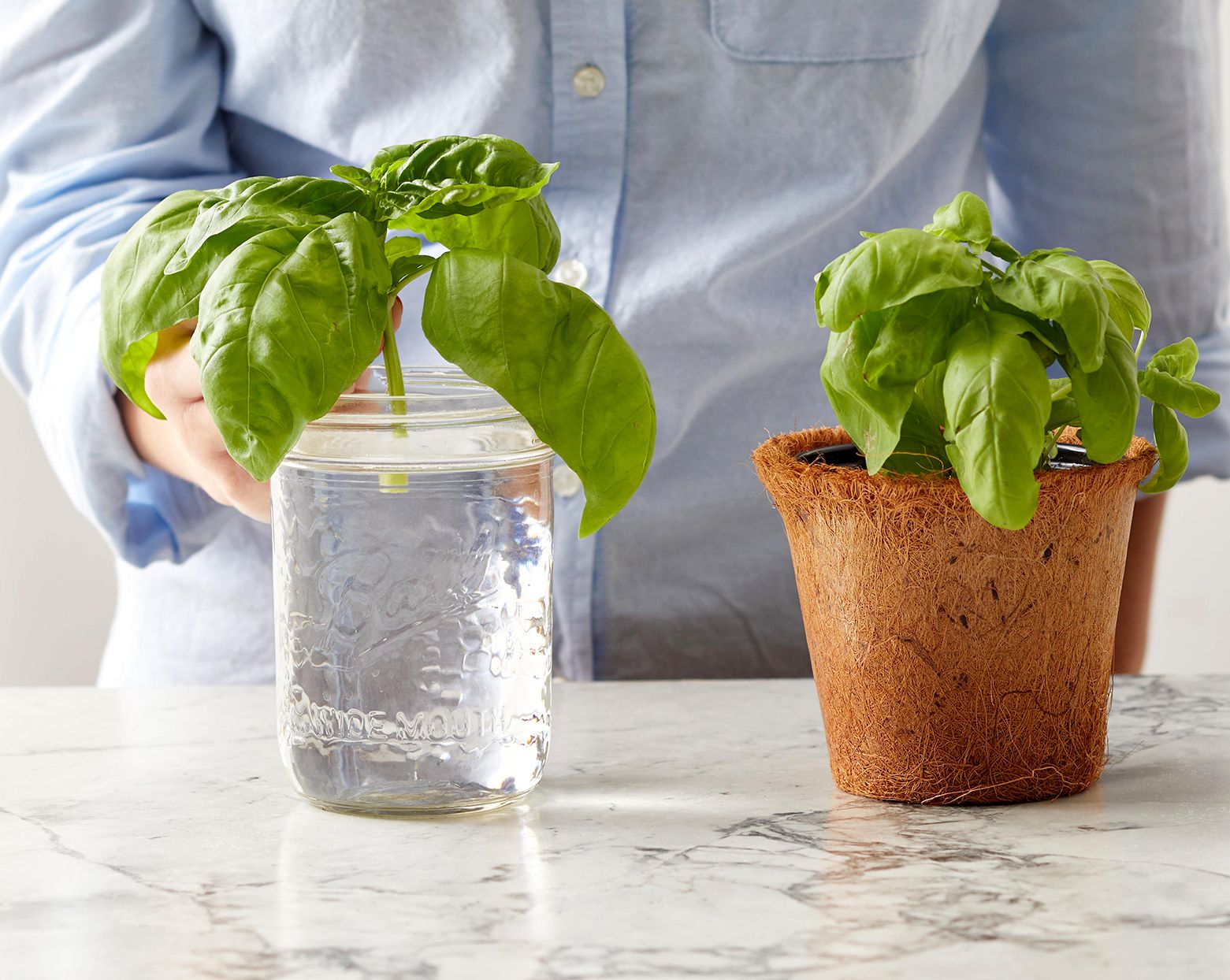

Edible Gardening
What Herbs Can You Grow In Water
Modified: January 22, 2024
Discover the wonders of edible gardening with our helpful guide. Learn about the herbs you can easily grow in water and enjoy fresh flavors in your kitchen.
(Many of the links in this article redirect to a specific reviewed product. Your purchase of these products through affiliate links helps to generate commission for Chicagolandgardening.com, at no extra cost. Learn more)
Table of Contents
Introduction
Gardening is a fulfilling and rewarding hobby, but not everyone has access to a traditional garden space. Thankfully, there is a solution that allows you to grow herbs even without a garden – growing them in water! This method, also known as hydroponic gardening, is gaining popularity among urban dwellers and those with limited outdoor spaces.
Growing herbs in water has many advantages. It is a simple and convenient way to enjoy fresh herbs all year round, regardless of the season. Additionally, it eliminates the need for soil, which can be messy and requires frequent watering. By growing your herbs in water, you can avoid common issues such as pest infestations and soil-borne diseases.
Not only is growing herbs in water practical, but it is also a visually appealing and versatile option. You can place your herb containers in any location with access to natural light, like a sunny windowsill or a balcony. This makes it perfect for apartment dwellers or those with limited outdoor space.
In this article, we will explore the benefits of growing herbs in water, discuss which herbs are suitable for this method, provide a step-by-step guide to get you started, and offer tips on harvesting and using your hydroponically grown herbs. So let’s dive in and discover the wonderful world of growing herbs in water!
Benefits of Growing Herbs in Water
Growing herbs in water offers several advantages that make it an appealing option for both experienced gardeners and beginners. Let’s explore some of the benefits:
- Year-round availability: When you grow herbs in water, you can enjoy fresh herbs throughout the year, regardless of the season. This means you can have your favorite herbs readily available for cooking or even for making herbal teas and remedies.
- No soil required: One of the biggest advantages of growing herbs in water is that you eliminate the need for soil. This not only saves you the hassle of dealing with soil-related issues like pests and diseases, but it also makes the setup and maintenance of your herb garden much cleaner and more straightforward.
- Water efficiency: Hydroponic gardening is known for its water efficiency. Unlike traditional gardening, where water can easily evaporate or get wasted, growing herbs in water allows you to conserve water and reduce your overall water consumption.
- Space-saving: If you have limited outdoor space or live in an apartment, growing herbs in water is an excellent solution. You can place your herb containers on a sunny windowsill, a balcony, or even a kitchen countertop. This compact nature of hydroponic gardening makes it a viable option for urban dwellers.
- Healthier plants: Since herbs grown in water receive all the necessary nutrients directly from the water, they tend to be healthier and more vibrant. This means you can expect lush, thriving plants that are less susceptible to pests and diseases.
- Aesthetically pleasing: Growing herbs in water can be visually appealing, adding a touch of greenery to your home or kitchen. You can use decorative containers or even repurpose glass bottles to create unique and beautiful herb gardens.
These benefits highlight why growing herbs in water is a practical and rewarding alternative to traditional gardening. Now that you are aware of the advantages let’s move on to the next section and explore the herbs that are well-suited for water growth.
Choosing the Right Herbs for Water Growth
Not all herbs are suitable for growing in water, but there are many varieties that thrive in a hydroponic environment. When selecting herbs for water growth, consider the following factors:
- Herb compatibility: Choose herbs that are known to perform well in water. Some popular choices include basil, mint, parsley, oregano, lemon balm, and sage. These herbs have been successfully grown in water by many gardeners.
- Culinary value: Select herbs that you frequently use in your cooking. This ensures that you will have a practical and convenient supply of fresh herbs on hand.
- Growth habit: Certain herbs, like basil and mint, have a vigorous growth habit and can quickly become bushy. Consider the available space and the potential for the herb to outgrow its container.
- Light requirements: Different herbs have varying light requirements. Some herbs, like basil and rosemary, prefer full sun, while others, like parsley and mint, can tolerate partial shade. Consider the amount of natural light available in your chosen growing location.
It’s important to note that not all herbs will grow their roots in water. Some herbs are grown hydroponically by suspending their roots in the water, while others are started in water and then transplanted into a growing medium like peat moss or coconut coir once their roots have developed.
Once you have selected the herbs you want to grow, it’s time to gather the necessary supplies for your hydroponic herb garden.
(Note: In the upcoming sections, we’ll provide a step-by-step guide and discuss the supplies needed in more detail.)
Supplies Needed for Growing Herbs in Water
To get started with growing herbs in water, you will need a few key supplies. While the specific requirements may vary depending on the size and scale of your hydroponic herb garden, here are the essential supplies you will need:
- Containers: Choose containers that are suitable for growing herbs in water. Options include glass jars, Mason jars, or any other transparent container that can hold water and allow for proper root growth. Make sure the containers have drainage holes or are designed specifically for hydroponic gardening.
- Water: Use clean, chlorine-free water for growing your herbs. You can use tap water that has been left in an open container for 24 hours to allow the chlorine to evaporate, or opt for filtered water.
- Hydroponic nutrients: Since the herbs will be growing in water instead of soil, they will need a source of nutrients. You can purchase hydroponic nutrient solutions specifically formulated for herbs or opt for organic alternatives.
- Natural light: Select a location with access to natural light for your hydroponic herb garden. Herbs require at least 6 hours of sunlight or bright indirect light per day. A sunny windowsill or a balcony that receives ample sunlight are excellent choices.
- Starter plants or seeds: You can choose to start your hydroponic herb garden from seeds or purchase starter plants from a garden center. Starting from seeds allows you to have a wider variety of herbs, while starter plants provide a head start.
- Growing medium (optional): Some herbs, like basil, benefit from starting in a growing medium before transitioning to water. Coco coir or peat moss are commonly used options for this purpose. If you choose to use a growing medium, make sure it is appropriate for hydroponic gardening.
These supplies will provide you with the necessary foundation to grow herbs successfully in water. In the next section, we’ll walk you through the step-by-step process of setting up and growing herbs in water.
Step-by-Step Guide to Growing Herbs in Water
Now that you have gathered all the necessary supplies, it’s time to get your hydroponic herb garden set up. Follow these steps to successfully grow herbs in water:
- Prepare the containers: Clean and sterilize your chosen containers before use. Rinse them thoroughly to remove any residue or chemicals that may be present.
- Fill the containers with water: Fill each container with clean, chlorine-free water. Leave about an inch of space at the top to prevent overflow when adding herbs.
- Add hydroponic nutrients: Follow the instructions provided on the hydroponic nutrient solution package and add the appropriate amount of nutrients to each container of water. Mix well to ensure proper distribution.
- Start the herb cuttings or seeds: If you are using herb cuttings, trim the bottom leaves from the stems, leaving a few nodes exposed. Place the cuttings in the containers, making sure the nodes are submerged in water. For seeds, follow the instructions on the seed packet for proper planting depth.
- Place in a sunny location: Position the containers in a spot that receives ample natural light. Ideally, herbs need at least 6 hours of sunlight or bright indirect light per day. Rotate the containers occasionally to ensure even light exposure for all sides.
- Maintain water levels: Check the water levels regularly to ensure they do not get too low. Add water as needed to maintain the desired water level, keeping the roots submerged.
- Monitor and adjust nutrient levels: As your herbs grow, it’s important to monitor and maintain proper nutrient levels. Follow the instructions on the nutrient solution package to ensure your herbs receive the necessary nutrients for healthy growth.
- Prune and harvest: Regularly prune your herbs to encourage bushier growth and prevent overcrowding. Once your herbs have reached maturity, harvest them by snipping off the desired amount of foliage, leaving enough leaves for the plant to continue growing.
By following these step-by-step instructions, you will be well on your way to successfully growing herbs in water. Remember to provide proper care and attention to your herb garden, and you will soon be enjoying the fresh flavors and aromas of homegrown herbs!
Common Mistakes to Avoid
While growing herbs in water is relatively straightforward, there are some common mistakes that beginners may encounter. By being aware of these potential pitfalls, you can avoid them and ensure the success of your hydroponic herb garden. Here are some common mistakes to avoid:
- Overwatering: One of the most common mistakes is overwatering your herbs. It’s important to maintain the correct water level, but avoid drowning the roots by keeping them constantly submerged. Allow the top few inches of the roots to be exposed to air to prevent root rot.
- Insufficient light: Herbs require adequate light to grow and thrive. Avoid placing your containers in areas with limited light or in direct sunlight for extended periods, as this can lead to scorching or stunted growth. Find a balance and provide your herbs with the recommended amount of light.
- Neglecting nutrient levels: Proper nutrient levels are essential for the health and growth of your herbs. Neglecting to monitor and adjust the nutrient solution can result in nutrient deficiencies or toxicities. Follow the instructions provided with your hydroponic nutrient solution and regularly check the nutrient levels in the water.
- Choosing incompatible herbs: Not all herbs thrive in a hydroponic environment. Avoid selecting herbs that are not suitable for growing in water, as they may not develop properly or struggle to survive. Do your research and choose herbs that have a proven track record of success in hydroponics.
- Forgetting to prune: Regular pruning is essential for maintaining healthy and productive herb plants. Neglecting to prune can lead to leggy and overcrowded growth. Trim back your herbs regularly to encourage bushier growth and to prevent them from becoming too tall or unmanageable.
- Using incorrect water: The quality of water used can greatly impact the success of your hydroponic herb garden. Avoid using chlorinated water straight from the tap, as the chlorine can be harmful to the plants. Let the water sit out for 24 hours or use filtered water to eliminate the chlorine content.
By avoiding these common mistakes, you can ensure that your herbs grow healthy and thrive in a hydroponic environment. Now that you are familiar with the potential pitfalls, you are well-equipped to maintain a successful herb garden. In the next section, we will explore how to harvest and make use of the herbs you have grown in water.
Harvesting and Using Herbs Grown in Water
Once your herbs have reached maturity and are ready to be harvested, it’s time to enjoy the fruits of your labor. Here are some tips on how to harvest and make use of the herbs you have grown in water:
- Harvesting: Begin harvesting your herbs once they have grown to a size that will not disrupt their growth. Use a pair of clean scissors or shears to snip off the desired amount of foliage. Start by cutting the outer leaves or stems and leave the central growth intact to allow for continued growth.
- Fresh use: Herbs are best when used fresh, as they retain their potent flavors and aromas. Incorporate them into your cooking by adding them to salads, sauces, soups, and marinades. You can also infuse them in oils and vinegars for an extra kick of flavor.
- Drying: If you have harvested more herbs than you can use immediately, consider drying them for future use. Hang bundles of herbs upside down in a well-ventilated area away from direct sunlight. Once dried, store them in airtight containers and use them in your recipes as needed.
- Freezing: Another method for preserving your freshly harvested herbs is freezing. Chop the herbs finely and place them in ice cube trays, covered with water or olive oil. Once frozen, transfer the herb cubes to freezer bags or containers. This allows you to conveniently add herbs to your dishes throughout the year.
- Herbal teas and infusions: Infuse your herbs in hot water to create flavorful herbal teas and infusions. Simply steep a few leaves or sprigs in hot water for a few minutes, strain, and enjoy. Experiment with different herb combinations to discover your favorite flavors.
- Herbal remedies: Many herbs grown in water have medicinal properties. Research and explore the potential health benefits of the herbs you have grown. Make herbal remedies like soothing balms, herbal salves, or infused oils. However, be sure to consult with a healthcare professional before using herbs for medicinal purposes.
By harvesting your herbs at the right time and exploring different culinary and health applications, you can fully enjoy the flavors and benefits of herbs grown in water. Remember to always use clean, pest-free herbs and handle them with care to maintain their freshness and quality.
Now that you have learned how to harvest and use your hydroponically grown herbs, let’s address some frequently asked questions about growing herbs in water in the next section.
Frequently Asked Questions
Here are some commonly asked questions about growing herbs in water:
- Can any herb be grown in water?
- Do herbs grown in water taste the same as those grown in soil?
- How often should I change the water?
- Can I reuse the nutrient solution?
- Can I start herbs from seeds in water?
- How long do hydroponically grown herbs typically last?
- Can I grow other plants in water using the same method?
Not all herbs are suitable for growing in water. Some herbs, like basil, mint, parsley, oregano, lemon balm, and sage, have been successfully grown hydroponically. It’s important to choose herbs known to thrive in a hydroponic environment.
Yes, herbs grown in water can have the same flavors and aromas as those grown in soil. In fact, some gardeners argue that herbs grown hydroponically have stronger flavors due to the controlled environment and nutrient-rich water.
It is recommended to change the water every two weeks to maintain its freshness and prevent the growth of algae or bacteria. However, if the water becomes murky or starts to develop an unpleasant odor before the two-week mark, it should be changed immediately.
It is not recommended to reuse the nutrient solution. Over time, the nutrient levels can become imbalanced, and the solution may accumulate harmful bacteria or pathogens. It’s best to prepare a fresh nutrient solution for each batch of herbs.
Yes, you can start herbs from seeds in water. Begin by germinating the seeds in a damp paper towel or planting them in a small container with a growing medium until the roots develop. Then, transfer the seedlings to your hydroponic herb garden.
The lifespan of hydroponically grown herbs can vary depending on factors such as maintenance, harvesting practices, and the specific herb. With proper care, herbs can last several months, providing you with a continuous supply of fresh flavors.
While the focus of this article is on growing herbs in water, the hydroponic method can be used for other plants as well. Vegetables like lettuce, spinach, and kale, as well as some flowering plants, can be successfully grown hydroponically.
These FAQs should address some of the common queries beginner hydroponic gardeners may have. If you have any further questions, consult gardening resources or reach out to experienced hydroponic gardeners for guidance.
Now that you have a well-rounded understanding of growing herbs in water, you can confidently embark on your hydroponic gardening journey and enjoy the bountiful harvest of homegrown herbs.
Conclusion
Growing herbs in water, also known as hydroponic gardening, provides a convenient and rewarding way to enjoy fresh herbs year-round. By eliminating the need for soil and utilizing water as the growing medium, you can overcome the limitations of traditional gardening and bring the benefits of herb cultivation to any space.
In this article, we explored the numerous benefits of growing herbs in water, including year-round availability, water efficiency, and space-saving capabilities. We discussed the importance of choosing the right herbs for water growth and provided a step-by-step guide for setting up and maintaining a hydroponic herb garden.
We also highlighted common mistakes to avoid when growing herbs in water, such as overwatering, insufficient light, neglecting nutrient levels, and using incompatible herbs. By being aware of these potential pitfalls, you can ensure the success of your hydroponic herb garden.
Additionally, we discussed the various ways to harvest and make use of the herbs you have grown in water. Whether you choose to use them fresh in your cooking, dry them for future use, make herbal teas and remedies, or freeze them for convenience, there are endless possibilities to enjoy the flavors and benefits of homegrown herbs.
Lastly, we addressed frequently asked questions, providing answers to common queries about growing herbs in water, from herb compatibility and water changing frequency to starting herbs from seeds and the lifespan of hydroponically grown herbs.
With the knowledge and insights gained from this article, you are now well-prepared to embark on your hydroponic herb gardening journey. So gather your supplies, choose your favorite herbs, and start growing your own thriving and flavorful herb garden in water. Happy growing!
